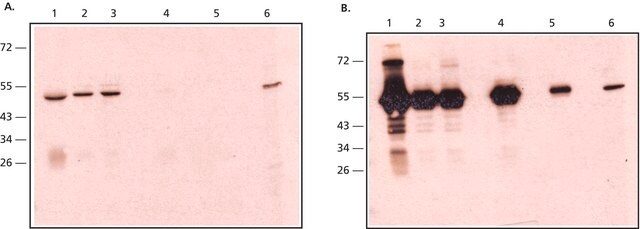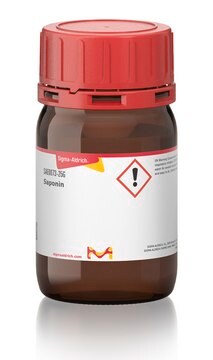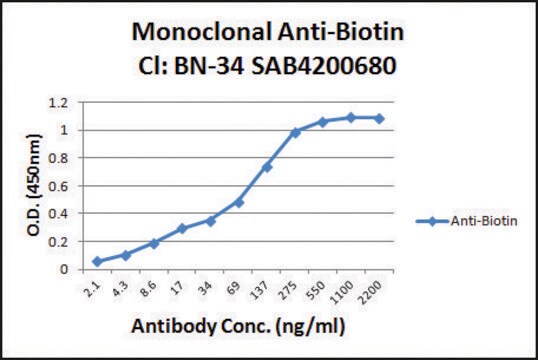R3155
Anti-Rabbit IgG, Native−Peroxidase antibody, Mouse monoclonal
clone RabT-50, purified from hybridoma cell culture
Sinônimo(s):
Mouse Anti-Rabbit IgG
About This Item
Produtos recomendados
fonte biológica
mouse
Nível de qualidade
conjugado
peroxidase conjugate
forma do anticorpo
purified immunoglobulin
tipo de produto de anticorpo
secondary antibodies
clone
RabT-50, monoclonal
Formulário
buffered aqueous solution
reatividade de espécies
rabbit
não deve reagir com
human, horse, bovine, cat, rat, chicken, pig, goat, monkey
concentração
2.5-5.0 mg/mL (antibody)
técnica(s)
immunocytochemistry: suitable
indirect ELISA: suitable
western blot: 1:10,000-1:20,000 using 3T3 cell extracts using Anti-Actin (20-33), Catalog Number A5060, as the primary antibody
western blot: 1:10,000-1:20,000 using Hela cell extracts using Anti-Actin, N-terminal, Catalog Number A2103, as the primary antibody.
Isotipo
IgG1
Condições de expedição
dry ice
temperatura de armazenamento
−20°C
modificação pós-traducional do alvo
unmodified
Descrição geral
Especificidade
Imunogênio
Aplicação
- immunoblotting
- immunoprecipitation
- western blotting
forma física
Exoneração de responsabilidade
Não está encontrando o produto certo?
Experimente o nosso Ferramenta de seleção de produtos.
produto relacionado
Palavra indicadora
Warning
Frases de perigo
Declarações de precaução
Classificações de perigo
Skin Sens. 1
Código de classe de armazenamento
12 - Non Combustible Liquids
Classe de risco de água (WGK)
WGK 3
Ponto de fulgor (°F)
Not applicable
Ponto de fulgor (°C)
Not applicable
Escolha uma das versões mais recentes:
Já possui este produto?
Encontre a documentação dos produtos que você adquiriu recentemente na biblioteca de documentos.
Nossa equipe de cientistas tem experiência em todas as áreas de pesquisa, incluindo Life Sciences, ciência de materiais, síntese química, cromatografia, química analítica e muitas outras.
Entre em contato com a assistência técnica









